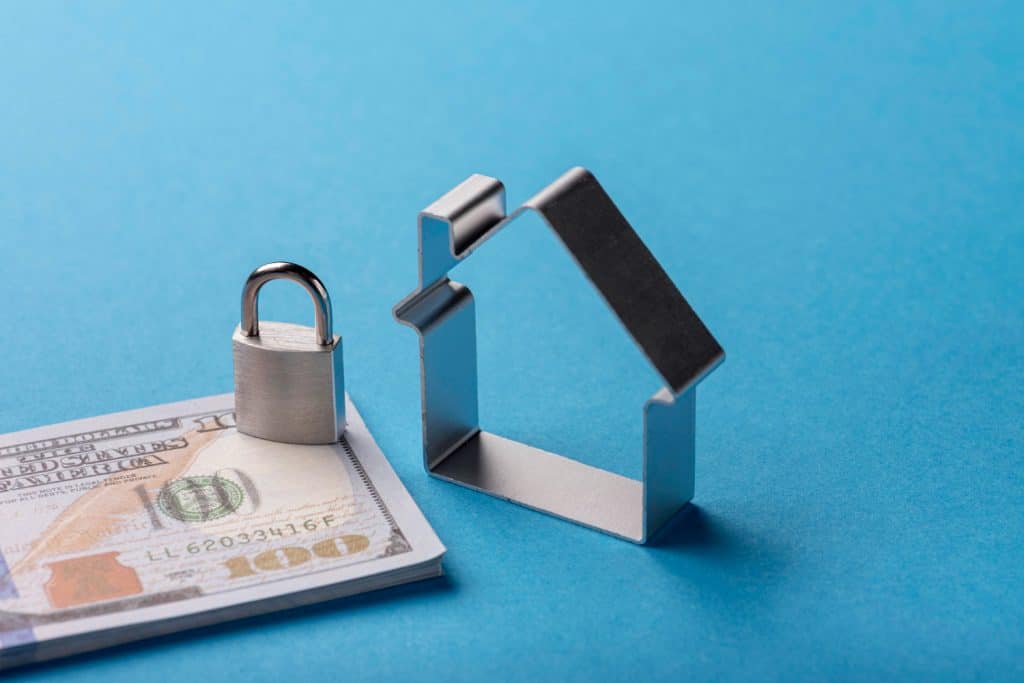Everything You Need to Know About Secured Loans in the U.S.

Anúncios
Secured loans are a widely used financial solution in the United States. They allow borrowers to access financing with lower interest rates by offering an asset as collateral.
This type of loan can be ideal for those looking to consolidate debt, finance large purchases, or overcome financial challenges, even in cases of poor credit history.
But how do secured loans work, when are they recommended, and what precautions should you take when applying for one?
In this comprehensive guide, we’ll show you the main features, including pros, cons, and how they differ from unsecured loans.
What Is a Secured Loan?
A secured loan is a type of financing where the borrower offers an asset as collateral, which can be a car, property, savings account, or another valuable asset.
This collateral acts as “security” for the lender, who can recover the loan amount if the borrower fails to meet their loan obligations.
Unlike an unsecured loan, which relies solely on credit evaluation, secured loans provide more security for lenders.
This factor often results in more accessible repayment terms.
How Do Secured Loans Work?
In secured loans, the collateral is an essential component. By offering an asset as collateral, the borrower reduces the risk for the lender. This translates into:
- Lower interest rates: Lenders offer reduced rates due to the lower risk involved.
- Higher loan amounts: Strong collateral allows for higher loan approvals.
- Access for those with bad credit: Individuals with poor financial history can benefit from secured personal loans, including options specifically for bad credit (secured loan for bad credit).
If the borrower fails to repay, the lender may take possession of the collateral, sell it, and recover the owed amount.
How to Apply for a Secured Loan
Applying for a secured loan is not as complicated as it might seem but requires attention to detail. Here’s a brief step-by-step process:
- Choose the type of collateral: Identify an eligible asset and agree to the terms of linking it to the loan.
- Credit evaluation and documentation: While collateral is key, many lenders still check financial history to determine repayment terms.
- Asset evaluation: The lender may require a detailed assessment of the collateral, such as properties or vehicles, to determine its market value.
- Sign the contract: Once approved, the transaction is finalized, and the asset is linked to the loan until full repayment.
Is It Tedious?
The application process can be longer than for an unsecured loan, especially due to the analysis and evaluation of the asset.
What Happens in Case of Default?
In a secured loan, defaulting may lead to the lender seizing the collateral offered as security. For example:
- For a home equity loan, the property may be foreclosed.
- In a vehicle-secured loan, the car may be repossessed.
This consequence should be carefully considered before making financial commitments with collateral.
Types of Secured Loans
Secured loans can meet various financial needs, such as:
Mortgage Loans
Mortgage loans are designed for those seeking large amounts, typically for purchasing or renovating properties.
In these cases, the financed property serves as collateral for the lender.
While they offer attractive interest rates, the risk of losing the property in case of default necessitates rigorous financial planning by the borrower.
Auto Loans
Another common type is an auto loan, widely used to finance the purchase of new or used vehicles.
It’s also possible to use a paid-off car as collateral to obtain new credit.
As these loans offer greater security to the lender, interest rates tend to be lower than those of unsecured loans.
Secured Lines of Credit
Secured lines of credit are a flexible option for those needing continuous access to funds.
Often tied to savings accounts or certificates of deposit (CD loans), they are especially attractive for individuals with unfavorable credit history, as they make it easier to obtain credit.
The deposit collateral reduces the financial institution’s risk, making the approval process less stringent.
Secured Student Loans
Lastly, secured student loans often have government backing to facilitate repayment.
In this type of loan, the government acts as a guarantor, enabling students to access financial resources under favorable conditions, such as long terms and reduced interest rates.
This option focuses on higher education, ensuring greater accessibility to education even for those facing financial difficulties.
Is a Secured Loan Worth It?
The answer depends on personal circumstances. Consider the following factors before deciding:
Pros
Secured loans offer several advantages, including lower interest rates, making them more accessible compared to unsecured loans.
They also provide higher credit limits, ideal for financing high-cost projects.
Additionally, they are available even for those with bad credit, making them an attractive option for those seeking a “secured loan for bad credit.”
Cons
On the other hand, there are significant disadvantages. One major risk is the possibility of losing the asset offered as collateral in case of default.
The approval process also tends to be more time-consuming, as it involves detailed analyses of the collateral presented.
Furthermore, there are extra costs, such as upfront expenses for asset evaluation. These aspects should be carefully considered before opting for this type of loan.
Differences Between Secured and Unsecured Loans
When deciding between secured and unsecured loans, understand the main differences:
Use of Funds
Regarding fund usage, secured loans are ideal for larger projects, such as extensive renovations, property acquisition, or investments requiring significant amounts.
This is due to the possibility of obtaining substantial sums by offering an asset as collateral.
Conversely, unsecured loans are better suited for smaller expenses, such as travel, minor repairs, unexpected events, or financial emergencies.
As they don’t require collateral, they offer more flexibility for addressing immediate needs.
Interest Rates
Interest rates also vary significantly between these types. Secured loans tend to have lower rates since the lender has greater security with the collateral, reducing the operation’s risk.
Unsecured loans, lacking asset backing, generally apply higher rates, especially for individuals with poor or limited credit history.
This makes secured loans a more economical choice for those able to provide collateral.
Available Limits
The available limits are another key point. In secured loans, approved amounts are typically higher, as they are directly related to the value of the collateral, such as properties, vehicles, or savings accounts.
In contrast, unsecured loans offer lower limits, adjusted to the financial profile and credit evaluation of the applicant.
This difference makes secured loans the better option for those needing substantial capital.
Application Requirements
Finally, the application requirements differ between the two loan types.
Secured loans require detailed evaluation of the collateral, along with specific documentation proving ownership of the asset and its compliance with lender requirements. This can make the process more bureaucratic and time-consuming.
Unsecured loans, however, rely solely on the applicant’s credit analysis, simplifying and expediting approval, making them more accessible for urgent situations.
Secured or Unsecured Loan: Which to Choose?
Choosing between a secured or unsecured loan depends on your:
- Financial goals: Major projects may justify secured loans.
- Credit history: Those with poor credit benefit more from secured loans.
- Ability to provide collateral: Not everyone has assets to secure financing.
In short, secured loans are a great alternative for those seeking accessible and flexible financing, as long as the collateral doesn’t compromise the borrower’s financial stability.
To learn more about managing your finances and finding the ideal loan for your consumer profile, keep exploring our website!
Take the opportunity to also read about the pros and cons of personal loans and understand their benefits, disadvantages, and main examples.





